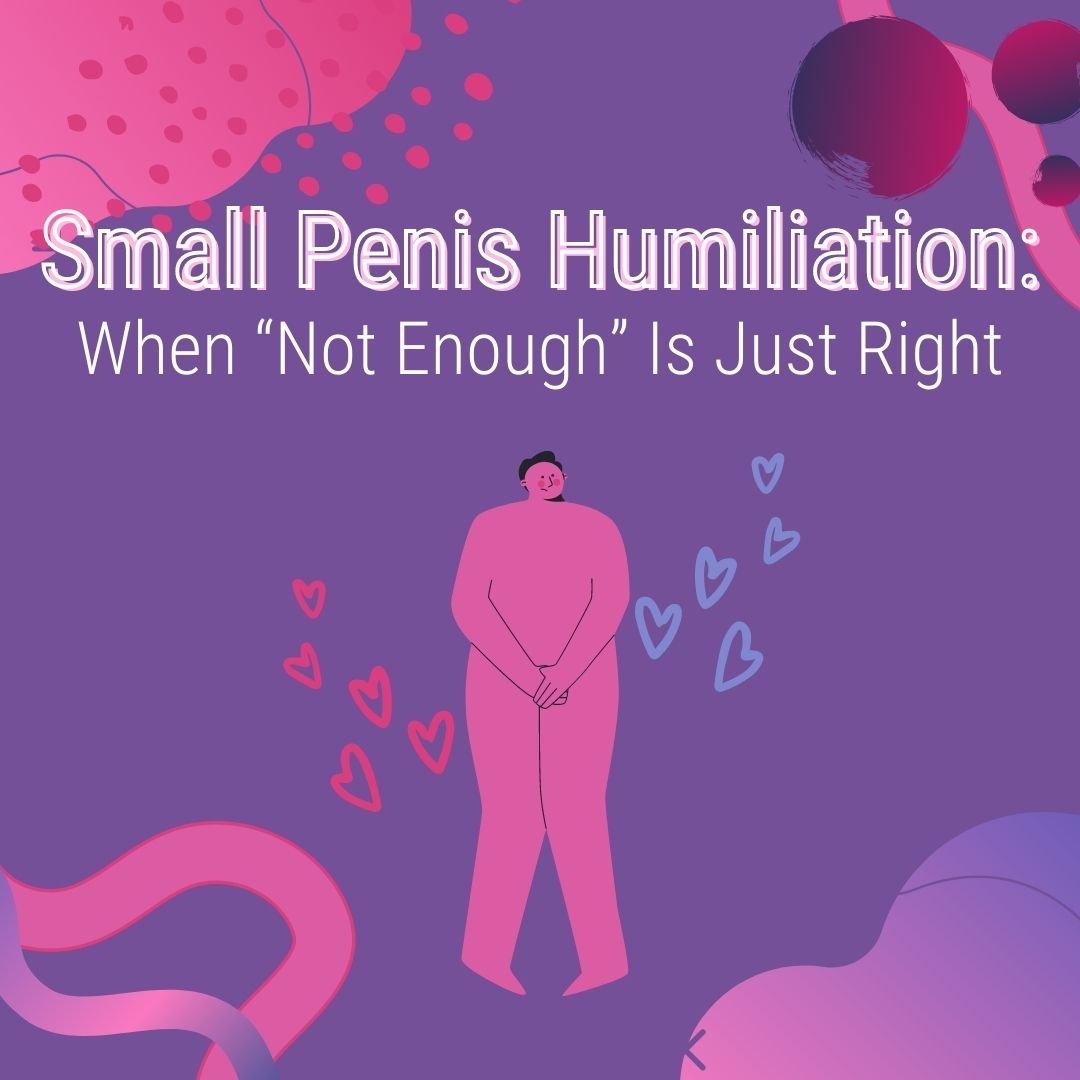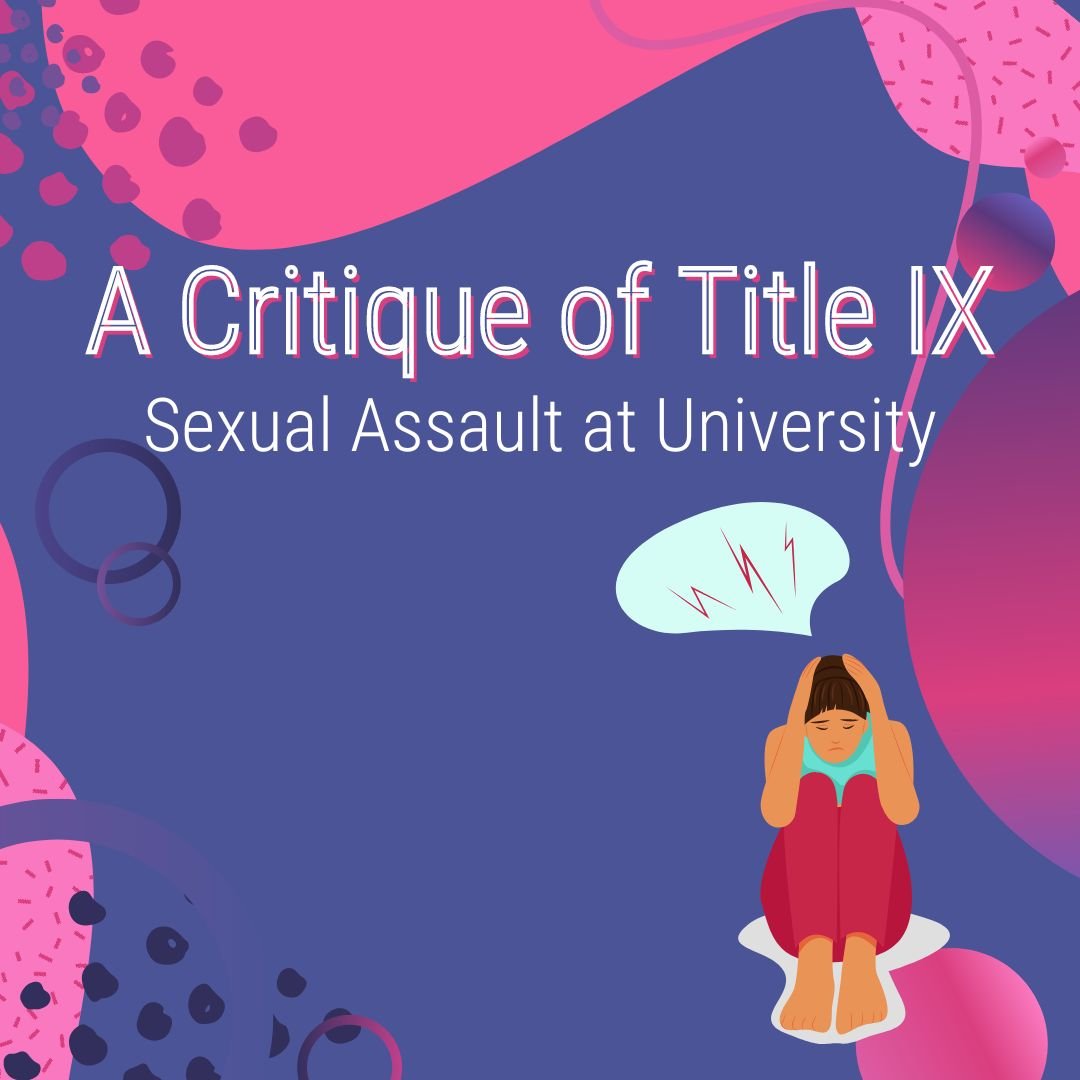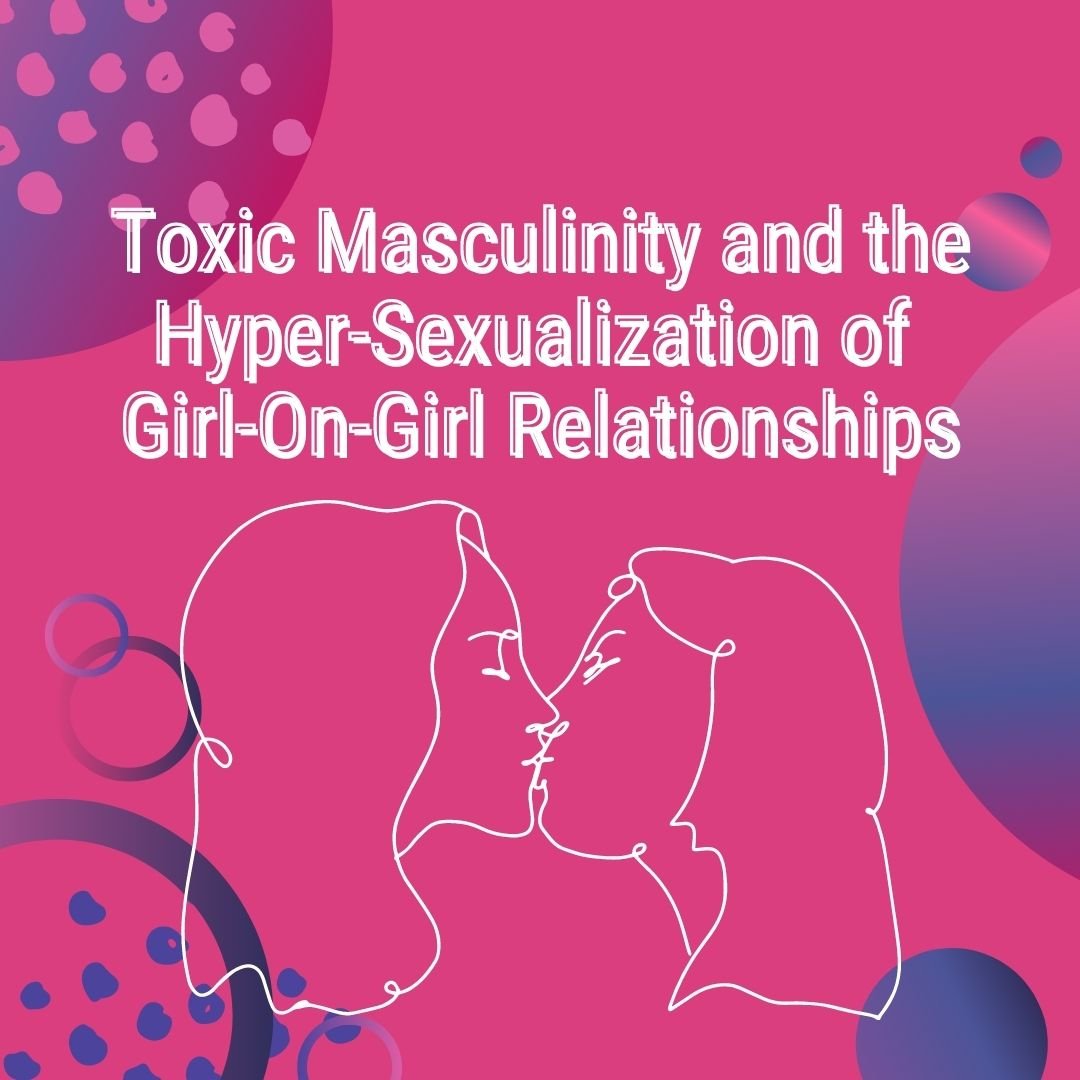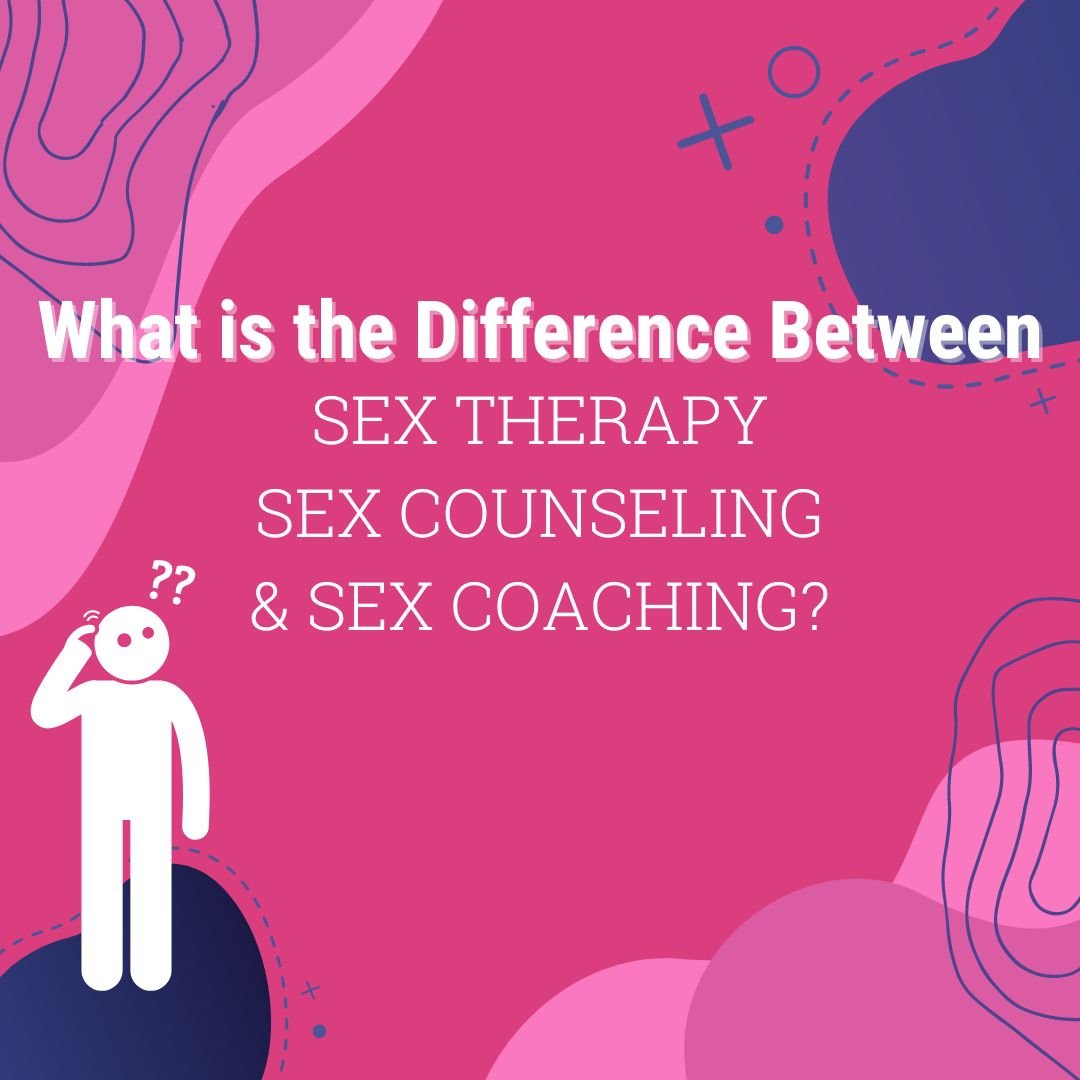Why is the clitoris so misunderstood and ignored in social and medical society? Because it's more than a pleasure system—the clitoris is a symbol of liberation and fear. The history of the clitoris is intrinsically tied to the patriarchy’s insidious plot to misinform and silence women’s sexual liberation. Zoe Mendelson, a writer, speaker, and advocate created the book Pussypedia - an inclusive guide to the vulva and vagina. Within her book, she provides transparent information about the pussy through bright fun graphics and casual language. In PussyPedia, she demonstrates how the medical industry refused to acknowledge and discuss the pleasure system within the vulva, specifically the clitoris. She illustrates that the medical and social dismissal of "pussy sexuality" advertised that it was frail and unfeeling.
Down In The Dumps: An Exploration of Period Poops
With the limited sex education I was given in school, the information about periods was extremely scarce. We were instructed about cramps and PMS, but there was zero mention of the existence, or ways to navigate “period poops.” Your period can make you poop more or less, and it can come in many forms: constipation, bloating, diarrhea, or even all of the above. But do you know why you are experiencing changes in your bowel movement, before and during your period? This article will delve into the science behind it, and ways to make your experience a little less shit (pun intended). Hormones are what you want to blame for your sudden increase in poops. Before your period starts, progesterone levels rise in order to prepare for a possible pregnancy. When menstruation begins instead of pregnancy, your body increases levels of prostaglandins, whilst progesterone levels fall. It is prostaglandins that encourage your womb muscles to contract to help break down the uterine lining and resulting in the hell that is menstrual cramps. In terms of poop, if your body produces more prostaglandins than necessary, it can enter the bloodstream and affect muscles, including the bowels and other digestive organs, and result in more frequent trips to the toilet. Lower levels of progesterone can also result in diarrhea.
Small Penis Humiliation: When “Not Enough” Is Just Right
Penis size is a loaded topic in much of the world, and the rise in popularity of internet porn makes unrealistic body standards even harder to avoid. To make things worse, small penises are the butt of jokes all the time even as our culture seems to be moving away from body shaming. Small penises are imagined to be symbolic of a lack of masculinity and power. Despite the fact many trans men without bottom surgery have very fulfilling sex lives and 85% of straight women report being happy with their partners’ size, many still spread the idea that penis measurements are central to desirability as a man. With all this in mind, it’s no surprise that almost half of the people with penises studied (all cisgender and heterosexual men) wish their penises were bigger. There are many healthy ways to address insecurities, but for a lot of people, the most fun (and kinky!) is addressing the issue head-on. Erotic humiliation or specifical small penis humiliation (SPH) is perfect for this!
Humiliation play gives people the opportunity to have their worst insecurities pointed out and their most painful fears about themselves confirmed in a controlled, consensual environment. Sometimes this comes from reenacting old traumas around embarrassment, sometimes it’s more original or abstract. Small penis humiliation (SPH for short) is a popular subsection of the erotic humiliation kink, probably because so many people are insecure about their size down there. And that’s the thing – you don’t even have to have a small penis to enjoy being made fun of for it! Plenty of people with average and even exceptionally large penises enjoy SPH.
A Critique of Title IX: Sexual Assault at University
Given the smaller scale on which American universities signify societal power relations, college campuses often constitute a microcosm in which policy changes can be applied and evaluated. In this way, universities not only echo societal issues but magnify them. Specifically, the issue of sexual assault controversies on campuses displays societal attitudes on the topic thus highlighting the priorities of national, state, and administrative policymakers. To demystify this issue, let’s synthesize the literature on campus sexual assault policy and practice by way of case studies on similar, progressive state legislation (California) and universities (Stanford) to illustrate the resulting political compromises as well as their short and long-term consequences.
Policies are not the only factors to be considered when discussing the real-world effects of sexual violence. In the modern-day, media coverage can significantly impact any policies felt by specific populations. Additionally, the media can either highlight or hide certain issues. Highlighting cases of sexual assault often will arouse public outrage for a short amount of time until the news cycle moves on. Further, in the media coverage of a sexual assault case, issues can be blown out of proportion to enhance the ethos draw of the event. This illustrates the fact that there is almost no way for the media to present an unbiased report of such a complex issue, although this was the intention behind free media at the beginning of democracy.
Consensual Nonmonogamy: What's in a Name?
When it comes to consensual non-monogamy, most people probably spend more time thinking about the logistics or the sexual gratification of having multiple partners. Yet, the words we use to talk and think about different topics matter. That’s why it’s worth analyzing what it means when we describe the act of having consensual relationships with more than one person as “consensual non-monogamy,” which is often abbreviated as CNM. It’s not that the phrase isn’t helpful–Non-monogamy illustrates how someone may have relationships with multiple people or how a relationship may even include more than two people. And by pointing out that it’s consensual, we differentiate between CNM and non-monogamy, where one party isn’t aware that their partners have other sexual or romantic relationships. Often, this takes the form of cheating, but it may be the case that some people could be in consensual non-monogamous relationships if they knew it was an option.
For those who know the difference and practice non-monogamy only when it’s consensual, it’s important to distinguish their relationships from cheating. Some people also use ethical non-monogamy (ENM), which emphasizes the same point. CNM has traditionally been used by researchers, but it has overtaken ENM as the terminology of choice in some circles. Page of Polyland explains that she prefers CNM because ethics vary. Either way, focusing on honesty and consent is something from which many people in more traditional relationships could benefit.
Cuck You!: Could You Be Interested In Cuckolding?
Have you ever fantasized about your partner cheating on you? No, I’m not asking if you’re polyamorous or interested in swinging. There are all kinds of ethical nonmonogamy, but cuckolding is a bit different. Traditionally, “cuckold” means a man whose wife is unfaithful to him, and that definition has been used since the 13th Century. Rather than two partners going to swingers’ parties together or forming new sexual relationships separately, in a cuckolding dynamic only one partner has the freedom to have sex with other people. This might sound unfair or off-putting, but to many, this dynamic is deeply fulfilling—not to mention hot!
In its most basic form, a cuckolding (or “cucking”) relationship is one in which one partner is expected to remain monogamous while the other gets to play with other people, sometimes while the “faithful” partner watches. Typically, although not always, these are heterosexual couples where the man is the cuck who is cuckolded by his female partner, the “cuckoldress,” and a man outside of their relationship called a “bull”. However, many cuckolding fantasies and relationship dynamics involve something more: an aspect of dominance and submission. Although plenty of cucks enjoy cucking purely because they like knowing their partner is having sexual fun with others, many cucks are turned on specifically from feeling humiliated by the “infidelity” or dominated by their “cheating” partner. This aspect is especially evident in cuckolding porn which is surprisingly (or not so surprisingly, depending on who you ask) a very popular genre. For example, the NSFW subreddit r/cuckold currently has over a million followers.
Current Affairs Update: What the Biden Administration is Doing for Trans Individuals
Six months after President Biden’s historic action on Transgender Awareness Day outlining policies for the governing and treatment of transgender individuals, America once again is caught in a political standstill with government officials (Biden included) fighting tooth and nail to push their own agendas. Despite Biden’s initial promises and positive attitude towards being able to protect trans rights significantly, this year has proved extremely difficult for transgender individuals. Still at issue here are the three original principles of transgender healthcare, access to government services, and visibility.
In May, Biden’s Assistant Health Secretary Rachel Levine, the first openly transgender federal official confirmed by the Senate, commented on the state of young transgender Americans by stating they are “being driven to the depth of despair.” As transgender youth suicide rates rose, Levine’s comment illustrates how anti-LGBTQ+ friendly policies being put in place in red states affect the mental stability of individuals. Supposedly in response to this situation, President Biden signed an Executive Order during Pride Month detailing his plan to safeguard healthcare for trans individuals, including establishing and promoting programs specifically designed to reduce youth suicide rates through prevention. These programs are set to be overseen by the Substance Abuse and Mental Health Services Administration, but will likely receive pushback in Conservative states, counties, and schools.
WYLD Recap
I was personally delighted as Ley David Elliette Cray gave her talk on the cathartic aspect of rope bondage when several people whether and how bondage could be incorporated into therapy and which rope is the best to buy. If I were in the same room with people, I am sure I would have seen something akin to a lightbulb moment as audience members listened to Cray’s words and considered rope bondage, perhaps for the first time, both professionally and personally. That is the hallmark of a good lecture and conference!
Nyotaimori: Where Sex Meets Sushi
Nyotaimori, or the Japanese art of serving sushi on a naked woman, has taken its place in the world of fine dining in the United States. Originally practiced by 17th-century samurai upon returning from battle, it has remained a celebration of the best cuisine reserved for special occasions. For these events, women will fully undress (some wear nude thongs) and lie on the table. The chefs will then adorn their bodies with large leaves which will hold the fish, along with decorative pieces like flowers and shells to cover the genitals and create a beautiful palette for the food. Due to food safety laws, the fish must not be placed directly on a naked body, although scrupulous hygiene is a requirement for the models.
While there are certainly no limitations to who can participate in nyotaimori, the dining experiences are typically in the top price range, since customers are paying for both the high-quality sushi and the models’ time. Companies like Nyotaimori Naked Sushi are typically located in cities known for high-end attractions like Las Vegas, Nevada, and Los Angeles, California, though some companies will travel to cater events. Rather than serving at their own restaurant, companies typically staff chefs and models who will travel to third-party locations for parties, business dinners, and other high-paying clients.
Sex in the Media: Netflix's New Sex Renovation Show
In the latest trend of sex-themed media, interior designer Melanie Rose goes behind the scenes in couples’ homes to help them create the sex room of their dreams in How to Build a Sex Room. This Netflix show, which was first released in July 2022, has become increasingly popular with viewers from all backgrounds; combining traditional reality design television with the more “taboo” world of sex and kink, the show has managed to engage different demographics and bring the subject matter to the forefront in an unassuming manner. In some ways, this show builds off of the foundation of sexual fantasy that popular media like the Fifty Shades of Grey franchise created and orients itself in the context of everyday life. The appeal of the show is that it centers on real couples, who explore sex and kink in an accessible way and are also not afraid to show this off in the media.
The designer, Melanie Rose, is a British woman known as the “Mary Poppins of Pleasure” (coolest nickname ever) who has successfully built a career in media and design over the past twenty years. While Rose is clearly dedicated to her craft and a master in her field, the true skillset she brings to the show is her clean and open communication with the couples on the show. She begins each session by seeing the potential space for renovation and then discussing with the contestants their current sexual desires and the areas which they may be willing to explore. She comes prepared with a bag of sex toys and bondage tools, including handcuffs, floggers, and anal plugs. Then, based off of the conversations about desire and kink, Rose designs and creates the perfect room for the couple with the help of her contractor, Mike.
Do I Like Him, Or Is He Just Tall?
It’s a tale as old as time: You’re talking to someone whose personality can only be described as the equivalent to boiled (unseasoned) potatoes. There is nothing remotely interesting about them, but you still find yourself fascinated with them, putting yourself through dull conversations about cryptocurrency or the new ‘Alpha Male Podcast’ they’re listening to. You take a moment to reflect on why you’re putting yourself through these boring conversations, and why on earth you’re still attracted to them—your conclusion? You don’t actually like him, he’s just tall. So why is this such a universal phenomenon? This article aims to uncover why we find ourselves more attracted to taller people, and also remind you that being tall is not a personality trait.
A 2015 study found that “human height is positively related to interpersonal dominance in dyadic interactions,” otherwise said, height and stature are seen to be synonymous with status and power. In terms of self-perception, it has been found that taller individuals, particularly taller men, have far higher levels of self-esteem in comparison to shorter individuals. Furthermore, not only are taller individuals perceived to be more threatening during a physical contest, but they are perceived to be “more competent, authoritative, intelligent, dominant, and having better leadership qualities.” There seems to be no negative associations with tall individuals. Even in naturalistic settings, like moving through a crowded street, the study found that “taller individuals were more likely to take precedence.”
Calling Bull**** on Goop
At the beginning of their book “Calling Bullshit,” University of Washington Professors Carl Bergstrom and Jevin West offer an explanation for the prevalence of bullshit: “everyone […] is trying to sell you something.” In the current attention economy—where websites are essentially paid by the amount of engagement—concern for science and health has been exchanged for the art of fabrication, sensationalism, and marketing. This creates a fast-moving, often careless, digital culture that feeds on people’s emotional connection to the topics they care about. We also know that this relationship is circular, as social media platforms offer advertisers the opportunity to target consumers with sometimes-guised messages catering to their interests. Thus, our interests both shape and are being shaped by our everyday online experience through carefully curated algorithms. These veiled brand advertisements employ cognitive biases and logical fallacies in their attempt to impersonate an expert on any given subject.
An example of a brand posing as a health expert is actress Gwyneth Paltrow’s lifestyle brand “Goop.” Goop began in 2008 as a newsletter and has since expanded to a website, online store, books, and brick-and-mortar storefronts. In 2018, Goop lost a lawsuit after their product description of their “vaginal egg” product was deemed misleading in its unscientific claims. In early 2020, Paltrow also produced a Netflix series based on her blog posts called “Goop Lab” where her Goop employees try different lifestyle changes in hopes of finding holistic cures for physical and mental illnesses. Then, she followed this series up with another almost instant cult classic, “Sex, Love & Goop” examining sexual dysfunction in couples and the potential healing power of multiple therapeutic types with a nonchalant tone that doesn’t do the complex subject the justice it deserves. This is at the heart of what makes Goop different (and arguably more dangerous) from other advertisers—often, what the company advertises are health-based recommendations, which have not been fact-checked or medically cleared by any substantial source.
The Mighty Little “T”: A Breakdown of IUDs and Their Problematic Insertion Practices
The Intrauterine Device, better known as an IUD, is one of the most effective birth control methods for people with uteruses. There are multiple types of IUDs, some hormonal and non-hormonal, but all are small plastic "T" shaped devices placed in the uterine cavity and cervix which is a simple procedure, yes, but one with insurmountable evidence of pain and even PTSD from some problematic insertion practices. The hormonal IUDs create more condensed mucus around the cervix, which traps and kills sperm. In addition, the hormones can stop ovulation altogether, meaning no eggs are leaving the ovaries, thus making pregnancy impossible - if there's no egg, there can be no fertilization. The non-hormonal IUD works more straightforwardly: sperm does not like copper. Non-hormonal IUDs are still made with plastic then wrapped with a small copper wire which protects the cervix from sperm. What are the benefits? How long does it last? How effective is it?
History of Gendered Pleasure Post-Roe
With the recent overturning of decades of precedent on privacy set by Roe v. Wade via the recent Dobbs v. Jackson Women’s Health Organization decision weighing heavy on the hearts of the nation, bodily autonomy is at a critical juncture that will determine how bodies experience pleasure for years to come. After all, what is pleasure without freedom? This seems grim but it is also not the first time certain bodies have been denied some kind of freedom. In order to be able to own our sexuality amid chaos, we need to recognize each other’s struggles, trace the historical elitism of pleasure, and stand together to say “never again.” So, let us explore which bodies are “allowed” to have private, sexual pleasure as determined by the public sphere.
We begin at the very conception of binary thinking (public versus private, woman versus man, etc.): Platonian society circa 428-347 B.C. Plato represents one of the first political commentators to engage in conversation revolving around women’s positionality in society. However, he chooses to have this conversation on the grounds of what is good for the community, and not for the equality of the genders. He understands that in order for society to continue, women are the necessary backbones in the home (the private sphere), through their birthing and raising of children, cleaning, cooking, etc.; yet he refuses to allow them the satisfaction of freedom in the public sphere.
Are Your Nipples Sad?: A Discussion of Sad Nipple Syndrome
During a pre-bedtime scroll through TikTok I was coming across multiple videos of people explaining that when their nipples are touched, either by themselves or others, they feel a great sense of sadness, loss, and other varying negative emotions. One TikTok user compared the sensation to “guilt and almost something like homesickness.” If you’ve read my other nipple article, you’ll know I’m a big fan of nipple play. Whilst I was aware that some people simply find no joy in nipple stimulation, I was not aware that for others, the sensation of touching their own nipples brought such negative feelings, nor was I aware that Sad Nipple Syndrome existed at all. Hence this article aims to uncover the reason and science behind it, to enlighten both me and anyone else curious to expand their nipple knowledge.
Whilst there have been articles on the connection between sadness and nipple stimulation in the past, it has only been in the context of lactation and breastfeeding. Dysphoric Milk Ejection Reflex (D-MER) is defined as an “abrupt emotional drop that occurs in some women just before milk release and continues for not more than a few minutes.” For D-MER, direct nipple stimulation was not needed for the onset of negative emotions, instead, it could be triggered by anything that caused a milk release. D-MER symptoms further seem to form a spectrum of distinct and different emotions—depression, anxiety, and anger—the intensity of this varies from each person. Its lack of research and discourse has meant that it’s still greatly misunderstood, with the primary belief being that it is influenced (within minutes or hours) by circumstances that influence dopamine levels.
Children’s Books: The Key to Early and Inclusive Sex Education
Talking to children about sex–and everything that entails–is one of the most controversial topics in the field of sexual education. When, where, how, and how often are questions that come to mind for parents, guardians, and educators. This topic has grown in complexity with the rise of the Internet and the increased accessibility of popular media. Film, television, social media, and more are filled with suggestive imagery and text that can spark questions in children at any age, prompting education from the adults in their lives. The information-sharing process can be complicated, but sex educators around the world have developed incredible works to aid this process, including some of the children’s books presented in this article.
For a humorous and informative background into the topic of sex education for children, I recommend watching this YouTube video featuring Sexual Health Alliance’s own Dr. Chris Donaghue. In this clip, Dr. Donaghue teaches parents Kristen Bell and Andy Lassner how to talk to children about sex, overcoming the awkwardness they may feel around the topic. An important takeaway from the video comes from Dr. Donaghue, who says, “The way we as adults talk about sex and body parts, and the language that we use is either going to make our children feel very confident or anxious and insecure.” Teaching without discomfort, shame, or negativity is a key component of inclusive and accessible sex education, especially for this sponge-like demographic who are known to absorb much more than adults give them credit for.
STI’s Through a Social Justice Lens
The basis of ethical perspectives including utilitarianism, universal human rights, contractualism, and communitarianism outline not only moral theories but also moral dilemmas. However, in practice, these dilemmas go further than pure theory, having real-world impacts on communities. For example, within the sphere of public health, stigma resulting from health issues or created in order to discourage certain lifestyles cause certain communities to be ostracized and left without proper health resources. We see this not only in the United States’ cultural bias against those with sexually transmitted infections but also with non-sexually transmitted infections caused by various viruses. Rather than further fuel these hateful flames, which do nothing to solve the underlying issues and only make it more challenging for oppressed populations, by approaching these problems through a social justice lens, distributive and recognitional justice interpretations support an argument against creating and reinforcing stigma.
Erika Blacksher, affiliate associate professor in the Department of Bioethics and Humanities at the University of Washington and fourth John B. Francis Chair in Bioethics, asserts that the goals of public health require public health to counteract existing stigma and not use stigmatized measures in its public approach. Elements of stigma might include individuals with socioeconomic and political power identifying and labeling a difference, linking this difference and those labeled as such with negative stereotypes, creating an “us” versus “them” framework, and discriminating against “them” in order to cause a loss of “their” socioeconomic or political status. This ensures the familiar power structures are kept intact in alignment with the patriarchal hierarchy, while health disparities widen between the upper and lower classes. However, when applied to public health, this stigma can have life-threatening consequences. In fact, from a communitarian theorist’s view, Blacksher explains stigma can drive health disparities by putting the blame on individuals or certain communities, as well as lowering the self-worth of those with stigmatized health issues.
Toxic Masculinity and the Hyper-Sexualization of Girl-On-Girl Relationships
I can’t tell you how many times this happened to me during my undergraduate experience: I’d be at a party, hanging out with my friends, and a conversation would start between a fraternity member and me. I tend to be quite the open book, especially after a drink or two. So, eventually, it would “come out” that I’m bisexual. At this point, it was always one of two responses: “That’s hot. That means we can have a threesome, right?” or “Oh, so like you just make out with other girls at parties?” This is not only not what it means to be a bisexual woman, it promotes harmful stereotypes that have real-life negative effects on the community. Comments like these simultaneously serve to take away a person’s autonomy to express genuine interest in the people they are actually interested in, limit the ability to desire only one partner, and undermine bisexuality as a valid sexual orientation in general.
Now, me being me, I got into a habit of pushing back on these comments by teasing these alpha males a bit. I’d respond with something like, “well, actually, your friend’s pretty cute, would you wanna have a threesome with him and me?” A look of disgust would immediately spread across their faces. Of course, they would never hook up with another man! Isn’t the whole point of bisexual women so that a man can sleep with two or more women at once without it becoming like a whole thing?! No. In fact, nothing about being a bisexual woman is meant exclusively for the entertainment or pleasure of a heterosexual man. I know that may come as a shock to many men out there, so let’s dig a little deeper into the false assumptions about bisexual women, what this results in, and why these notions are harmful to society as a whole.
Vabbing: The Latest Trend for Vaginas
Recently on TikTok, a jarring trend has emerged called “vabbing” which Rolling Stone refers to as a “portmanteau of ‘vagina’ and ‘dabbing.’” In this trend, those with vulvas will gather up their vaginal secretions to rub behind their ears in hopes that the pheromones it contains will attract potential suitors. The idea of using pheromones to increase attraction is common; there are often oils and perfumes sold with the intention to enhance your natural pheromones, and there are studies behind the effectiveness of pheromone-based attraction in many species. However, without evidence to support the proposed benefits of vabbing, it has quickly become just a humorous trend and point of discussion on the Internet. But the questions remain: is there any validity to this trend, and where did it come from?
One of the first reported mentions of vabbing in recent years comes from the book The Game of Desire by Shannon Boodram, in which she speaks to her personal success using her vaginal fluids to attract others. ABC reports that podcast the Secret Keepers Club, hosted by Carly Aquilino and Emma Willmann, mentions this phenomenon too, speaking to a trend they sparked within their friend group of using “coochie juice as perfume.” The trend spread like wildfire through the Internet, particularly on TikTok, as users began to share their own testimonies with the practice, including strangers complimenting their perfume or flirting with them in public. This anecdotal evidence was reason enough for hundreds of users to give it a shot, coupled with the unique feature of no downsides to the practice.
What is the Difference Between Sex Therapy, Sex Coaching, and Sex Counseling?
When beginning your journey in the sexual health industry, either as a professional or patient, it can be difficult to distinguish the difference between a Sex Therapist, a Sex Coach, and a Sex Counseling. While all three tend to fall under the same umbrella, each position has unique qualifications and specializations. Sex Therapist: A sex therapist is mental health professional licensed and certified through the American Association of Sexuality Educators, Counselors, and Therapists (AASECT). Their psychotherapy education allows them to assist in short-term and long-term sexual issues. Clients may seek a sex therapist for issues such as vaginismus, sexual trauma, trouble orgasming, and more. Sex therapists work to define sexual problems by providing comprehensive care and resolutions through in-depth sessions and homework.
























